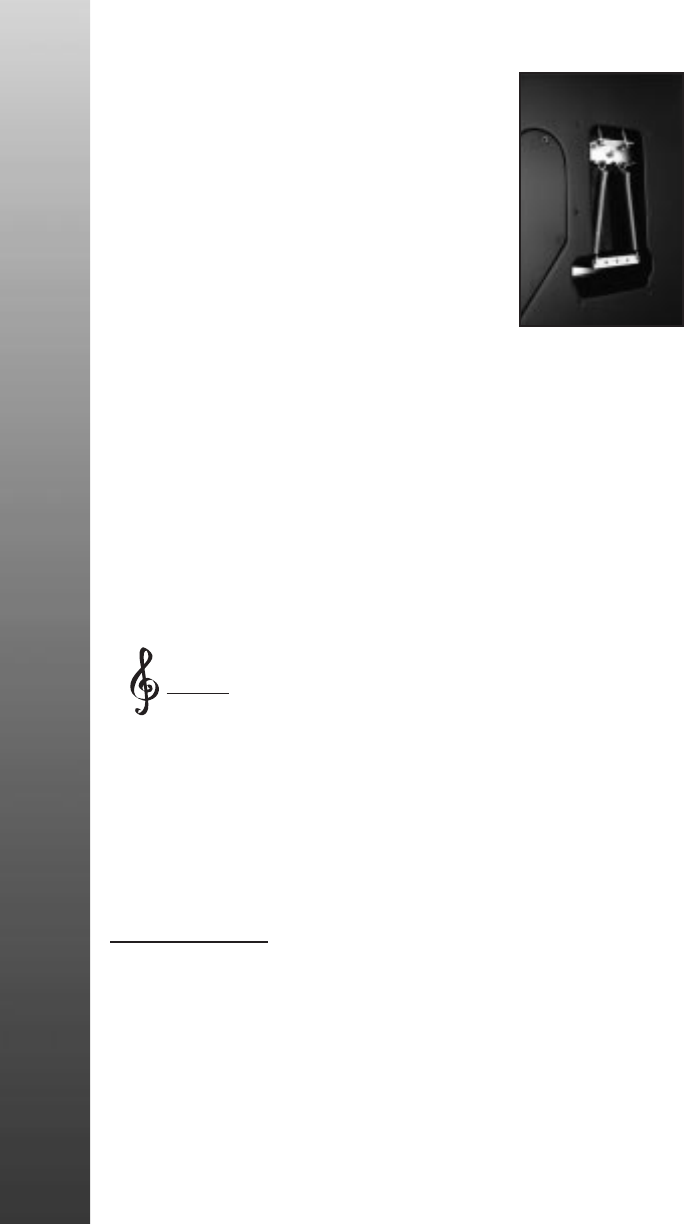
Per Edward’s specification, the tremo-
lo system is adjusted to rest on the
body surface for maximum sustain and
tonality. This will only allow the
strings to be dropped below pitch.
This also ensures tuning stability when
using the D-Tuner or when a string
breaks. The instrument is equipped
with two springs, which allow proper
tension for the string gauge supplied
with the guitar. The extra spring is
enclosed should you prefer to use a heavier string gauge.
Proper tremolo tension is achieved when the bottom of the
tremolo bridge plate rests on the top surface of the guitar
body without requiring excessive force to depress the
tremolo arm.
The tremolo can be adjusted to operate as a floating style
tremolo by loosening the spring tension. Turn the spring
tension screws clockwise to increase the spring tension,
and counterclockwise to decrease the spring tension.
This instrument should be tuned to proper pitch (A-440)
before and after making adjustments.
If the floating tremolo style is desired, it is
recommended that you remove the D-Tuner,
as its operation causes a change in string ten-
sion that will affect the tuning of the other strings. An extra
string lock bolt is enclosed in the case, should the D-Tuner
be removed.
CAUTION: Loosen all string tension before installing or
removing tension springs. Tremolo springs are designed
for high tension. Extreme care should be taken when
installing and removing these springs.
Tremolo Arm
The tremolo arm is inserted and screwed into the tremolo
arm socket on the bridge plate. This assembly can be
adjusted to control the amount of torque required to rotate
the tremolo arm. Some players prefer the tremolo arm to
stay in place when used. This can be accomplished by
using the supplied 12mm wrench to hold the top of the
tremolo arm socket while screwing the tremolo arm firmly
into place.
10
Note


















